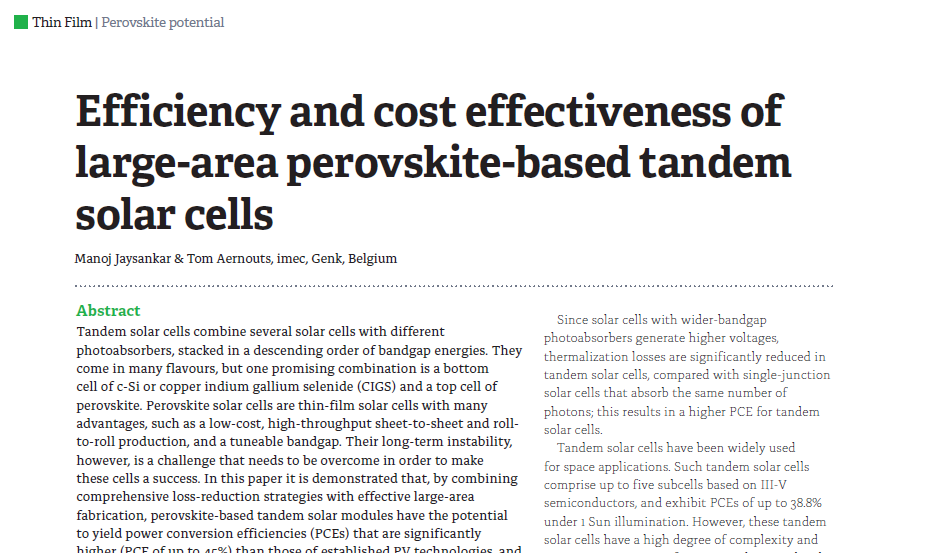By Manoj Jaysankar; Tom Aernouts
Tandem solar cells combine several solar cells with different photoabsorbers, stacked in a descending order of bandgap energies. They come in many flavours, but one promising combination is a bottom cell of c-Si or copper indium gallium selenide (CIGS) and a top cell of perovskite. Perovskite solar cells are thin-film solar cells with many advantages, such as a low-cost, high-throughput sheet-to-sheet and rollto- roll production, and a tuneable bandgap. Their long-term instability, however, is a challenge that needs to be overcome in order to make these cells a success. In this paper it is demonstrated that, by combining comprehensive loss-reduction strategies with effective large-area fabrication, perovskite-based tandem solar modules have the potential to yield power conversion efficiencies (PCEs) that are significantly higher (PCE of up to 45%) than those of established PV technologies, and can be manufactured on an industrial scale.



